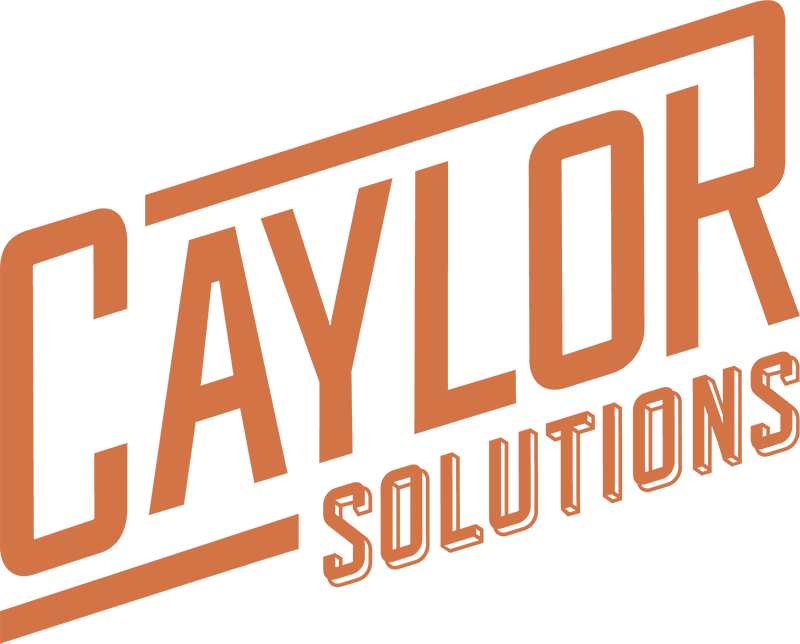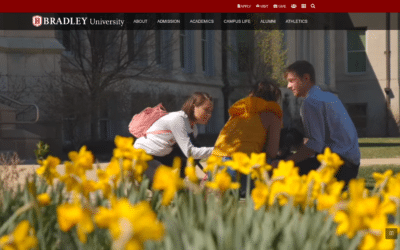These online marketing blunders are easy to spot… when you’re not the one committing them. Today, we list 10 of the most common – and most egregious – social media marketing sins that higher education marketers make, and how you can avoid these costly errors.
Blunder #1: Publishing irrelevant content.
Distributing content that’s irrelevant to your audiences is the surest way to banish your brand to irrelevance. Audiences only come back to content authors that are publishing content that’s relevant to them.
But this is a tricky one. Everyone would agree that you shouldn’t publish irrelevant content, but since relevance is relative, who’s to decide what is relevant and what is not?
The answer: Your audience. But even more specifically…
The audience must always be the reference point for what is relevant or not.
What questions is your audience asking from you?
If you’re writing a blog post for alumni, you can be sure they’re not asking you about your president’s pet project (although I’m sure it’s fascinating!). But they will be asking you about his or her vision to further your college or university for the next three to five years.
If you’re crafting an infographic for prospective students, you can be sure they’re not asking you to show them how technology is shaping the future of education. But they will be asking you how your institution is at the forefront of leveraging technology for your students.
Don’t publish what you find interesting, per se. Publish the answers to the questions your audience is coming to you for.
Blunder #2: Publishing content your audience can get anywhere else.
Many colleges and universities fill their digital marketing channels with content that merely echoes what everybody else is saying.
Everybody has content on finding and securing financial aid. Everyone’s got a freshman’s guide to college life.
And while you should have content on these topics, you’ve got to find other angles, stories, and opinions to express in order to differentiate you from your competitors.
One great example is how Crossroads Bible College president, Dr. Charles Ware, sets his college apart by publishing content that educates their audience on the concepts of inter-racial reconciliation and urban ministry.
Since the school is centered on preparing ministry leaders for multiethnic, urban settings, they know their audience is asking these kinds of deep questions – and they’re not likely to find this content at any other college website.
Blunder #3: Publishing content in just one form.
This social media marketing misstep is a common ailment because of the universal fact that most higher education marketers cut their teeth in one area of content creation.
This can become a blind spot as each marketer tends to stay within their comfort zone instead of branching out into new media in their social media marketing.
Marketers with a background in graphic design will be biased towards imagery and design.
Those with writing in their background will tend to stick with blogging.
Others with a publishing background often become fixated on their magazine to the detriment of other strategies like email marketing, website, and video content.
It’s important to surround yourself with artists and creators of different fields so that you publish content across all marketing channels and media.
Blunder #4: Publishing content when the audience isn’t looking for it.
Distributing financial aid guides in May or offering tips on finding jobs in September makes no sense. While the topics are relevant, the timing is off, which kills the effectiveness of the content.
Use an editorial calendar that’s centered on the rhythms and events in your audience’s life to strategically publish your content when your audience is asking the question.
Blunder #5: Missing opportunities to speak out on current events.
Being a private, small institution has incredible advantages, and one of them is that you can more easily leverage the buzz generated around current events than a large, public institution.
In a Google Hangout for higher ed marketers, ExpertFile’s CEO, Peter Evans, shares how newsjacking is uniquely suited to smaller institutions that can form a message around current events quickly enough to be effective.
“[Newsjacking] favors the fast, not the big.”
Keep your eye on the current events happening in the areas your audience cares about, and when something notable occurs, publish your institution’s thoughts on the matter in a way that highlights the values you want to shine through in your messaging. Interview your on-campus experts on the topic and then publish quotes from them on the matter.
This YouTube video on how Arby’s newsjacked the Grammy’s and Pharell’s hat is an excellent example of how a brand can use current events to increase their brand awareness.
A Word of Caution
Don’t assign an essay to your resident expert on the topic – or you’ll be waiting until next semester for their polished and well-researched response.
By then, it’ll be too late.
Blunder #6: Publishing content… whenever.
Publishing content regularly and frequently is extremely important to building brand authority and encouraging repeat visits. However, too many times, higher ed websites publish new content only when they finally get around to it.
This was a critical blunder I made for some time, and the results I was seeing were mediocre.
But once I figured out how to get my content created and out the door on schedule most of the time, I saw my traffic explode.
And that’s when my prospects really started to pick up.
Infrequent posts can happen when:
- There’s no clear marketing strategy,
- There’s insufficient staff assigned to the marketing strategy,
- Staff members are not given deadlines,
- There’s an unrealistic publishing schedule, or
- Marketing is not taken seriously and requests for quotes, stories, or other content is ignored or delayed.
Unfortunately, there are no easy answers to getting content out on time every time. Meeting publishing deadlines is all about leadership, team building, and organizational culture.
Aim to improve your publishing frequency and regularity. Perfection isn’t required for results, just improvement.
Blunder #7: Distributing content through channels your audience doesn’t use.
Some marketers refuse to go into certain social media channels because they just don’t know enough about them. And as a result, they’re missing all the traffic they could be getting with that piece.
Survey your audiences to see which publications they read, which social media platforms they use, and how they consume (or wish to consume) your content.
Research new marketing channels and learn how to leverage them properly if your audience is there.
Blunder #8: Relying solely on organic reach.
Perhaps the saddest truth of our century is that many major social media platforms do not publish your posts to all of your followers. To expand the reach of your posts, you have to pay for it.
Believe me, I get it.
After spending the time, sweat, tears, and money into an amazing piece of content, it feels like rubbing salt into a wound to have to pay for it to get to all of those followers that you worked so hard to get, but…
Paid social media advertising is here to stay, so you need a budget.
To be successful at social media marketing, you must have a budget for paid social media advertising.
It doesn’t have to be outlandish – or as gigantic as Coca-Cola’s marketing budget – but you need to put some skin in the game to get the results that you need.
Blunder #9: Keeping your platform to yourself.
Today’s information age is founded on and expanded through generosity. The more you share, the more you get back.
Social media is built from the ground up on this concept of sharing and interaction.
But a lot of higher education social media channels don’t seem to understand this, preferring to keep their social media walls reserved for their own content and announcements.
But opening up your wall to others by retweeting and sharing their posts – when their content is relevant to your audience – has numerous benefits:
- You’ll get new visitors to your site who’ll be exposed to your content because you shared their friend’s content,
- You’ll increase your brand awareness,
- You’ll be able to join existing conversations using the power of hashtags, and
- You’ll show the generosity of your college or university as it shares its platform.
Another word of caution: Make sure that the content you share or retweet is consistent with your brand’s messaging, and that the author of the content is a trustworthy source.
Blunder #10: Keeping to yourself.
Social media is supposed to be social! Social media users (even you!) love to see when friends not only see their posts, but leave thoughtful comments.
Yet knowing all of that, too many college and university marketers say absolutely nothing in response to their followers posts. Or, if they do, it’s too generic and robotic.
The secret to being social is to comment quickly and genuinely to your followers’ posts and to their comments on your posts.
Another great trick is to ask an open-ended question after sharing your thoughts with your followers to encourage an ongoing dialogue with your audience.
I think the most infuriating thing about these social media blunders is that it’s too easy to make them!
It happens to the best of us. We’re busy. We’re distracted. We’ve got other things we’re thinking about.
But you can’t afford to let these all-too-common social media blunders kill your social media marketing results.
If you need help spotting and solving these blunders in your marketing efforts, having an objective expert in your corner can help you get your social media investment working for you.
Get ahold of us today for a free digital marketing audit!
Market More. Spend Less.
Set yourself free from your shrinking marketing budget with my popular ebook Marketing on a Shoestring Budget! This ebook is jammed with practical ways to produce high-quality marketing on the cheap.
Inside, I’ll show you proven marketing tactics like…
-
- How to leverage low-cost technologies to reach your target market,
- How to craft a content marketing strategy on a bare-bones budget,
- The number one thing your website needs to do,
- The key to getting free, organic traffic to your website, and more.
No hype. No pie in the sky. Just real solutions for getting the job done with the budget you’ve got.
Featured image by alekseiveprev via Adobe Stock











